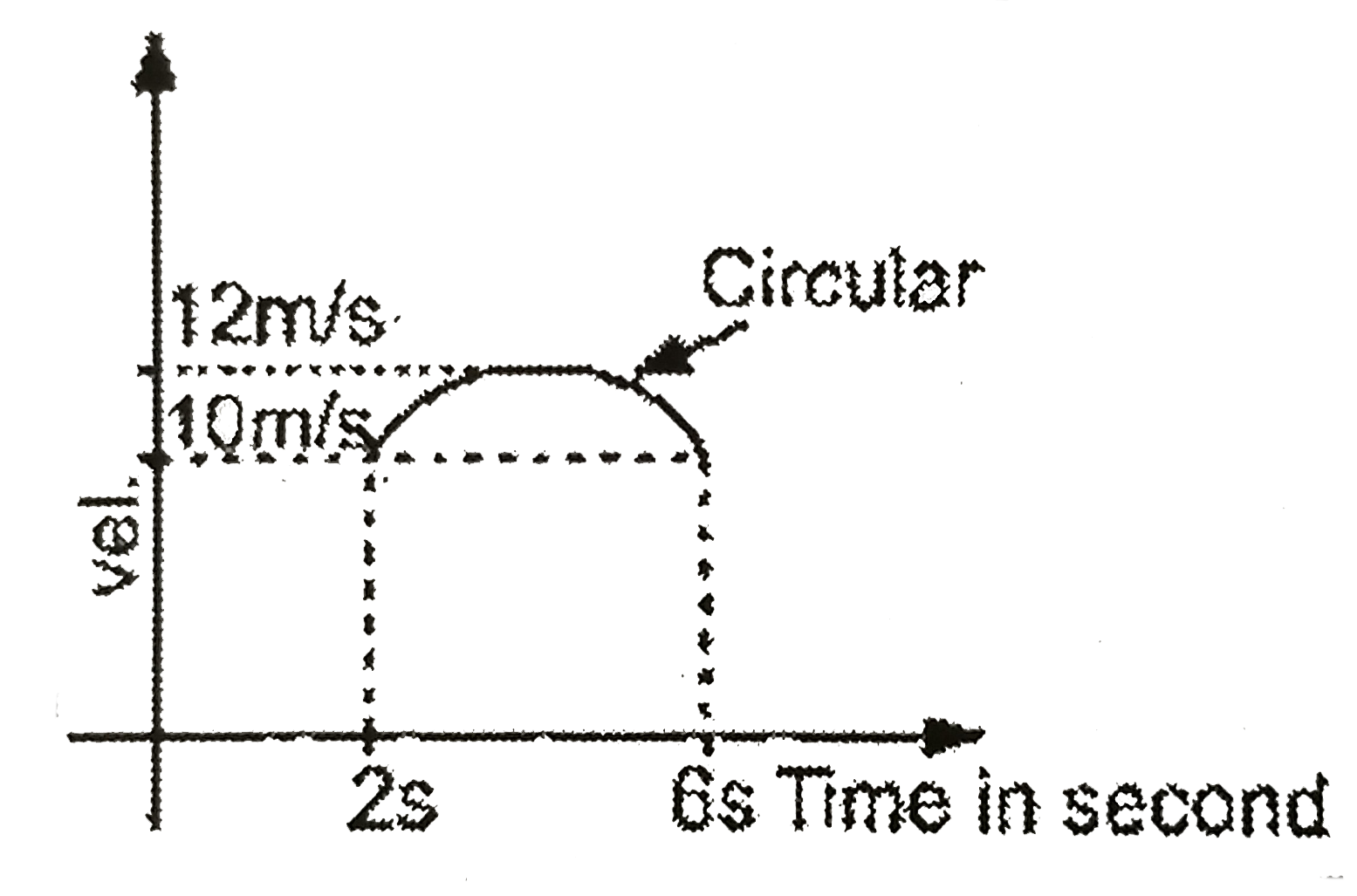The velocity of particle at time t is given by the relation v=6t−t26. The distance traveled in 3 s is, if s=0 at t=0
392
572
512
332
The correct Answer is:C
To find the distance traveled by the particle in 3 seconds given the velocity function v=6t−t26, we can follow these steps:
Step 1: Write the relationship between velocity and distance
The velocity v is defined as the rate of change of distance s with respect to time t:
v=dsdt
Thus, we can rewrite the equation as:
ds=vdt
Step 2: Substitute the expression for velocity
Substituting the given velocity expression into the equation:
ds=(6t−t26)dt
Step 3: Integrate both sides
Now, we integrate both sides to find the distance s:
s=∫(6t−t26)dt
Step 4: Perform the integration
We can break the integral into two parts:
s=∫6tdt−∫t26dt
Calculating these integrals:
s=6⋅t22−16⋅t33+C
s=3t2−t318+C
Step 5: Determine the constant of integration
We know that at t=0, the distance s=0:
s(0)=3(0)2−(0)318+C=0
This implies C=0. Therefore, the equation for distance simplifies to:
s=3t2−t318
Step 6: Calculate the distance traveled in 3 seconds
Now, we substitute t=3 into the distance equation:
s(3)=3(32)−(3)318
Calculating this:
s(3)=3(9)−2718
s(3)=27−32
Converting 27 to a fraction:
s(3)=542−32=512
Final Answer
The distance traveled in 3 seconds is:
512
The velocity v is defined as the rate of change of distance s with respect to time t:
v=dsdt
Thus, we can rewrite the equation as:
ds=vdt
Substituting the given velocity expression into the equation:
ds=(6t−t26)dt
Now, we integrate both sides to find the distance s:
s=∫(6t−t26)dt
We can break the integral into two parts:
s=∫6tdt−∫t26dt
Calculating these integrals:
s=6⋅t22−16⋅t33+C
s=3t2−t318+C
We know that at t=0, the distance s=0:
s(0)=3(0)2−(0)318+C=0
This implies C=0. Therefore, the equation for distance simplifies to:
s=3t2−t318
Now, we substitute t=3 into the distance equation:
s(3)=3(32)−(3)318
Calculating this:
s(3)=3(9)−2718
s(3)=27−32
Converting 27 to a fraction:
s(3)=542−32=512
The distance traveled in 3 seconds is:
512
Topper's Solved these Questions
Similar Questions
The velocity v of a particle is given by the equation v=6t2−6t3, where v is in ms−1, t is the instant of time in seconds while 6 and 6 are suitable dimensional constants. At what values of t will the velocity be maximum and minimum ? Determine these maximum and minimum values of the velocity.
View SolutionThe velocity v of a particle is given by the equation v=6t2−6t3, where v is in ms−1, t is the instant of time in seconds while 6 and 6 are suitable dimensional constants. At what values of t will the velocity be maximum and minimum? Determine these maximum and minimum values of the velocity.
View Solution
Knowledge Check
The position of a body moving along x-axis at time t is given by x=(t2−4t+6)m. The distance travelled by body in time interval t = 0 to t = 3 s is
A5 mB7 mC4 mD3 mA particle moves along x-axis and its acceleration at any time t is a = 2 sin (πt), where t is in seconds and a is in m/s2 . The initial velocity of particle (at time t = 0) is u = 0.
Q. Then the distance travelled (in meters) by the particle from time t = 0 to t = 1 s will be :A2πB1πC4π4Dnone of theseA particle moves along x-axis and its acceleration at any time t is a = 2 sin (πt), where t is in seconds and a is in m/s2 . The initial velocity of particle (at time t = 0) is u = 0.
Q. Then the distance travelled (in meters) by the particle from time t = 0 to t = t will be :A2π2sinπt−2tπB−2π2sinπt+2tπC2tπDnone of these
The position of a particle is given by the equation f(t)=t3−6t2+9t where t is measured in second and s in meter. Find the acceleration at time t. What is the acceleration at 4 s?
View SolutionThe position of a particle varies with time according to the relation x=3t2+5t3+7t, where x is in m and t is in s. Find
(i) Displacement during time interval t = 1 s to t = 3 s.
(ii) Average velocity during time interval 0 - 5 s.
(iii) Instantaneous velocity at t = 0 and t = 5 s.
(iv) Average acceleration during time interval 0 - 5 s.
(v) Acceleration at t = 0 and t = 5 s.
View SolutionThe displacement s of a particle at a time t is given bys=t3−4t2−5t. Find its velocity and acceleration at t = 2.
View Solutionthe velocity of a particle varies with time as shown below the distance travelled by the travelled by the particle during t=2s"and" t= 6s. Is

View SolutionVelocity of a particle is given as v=(2t2−3)m/s. The acceleration of particle at t = 3s will be :
View Solution
